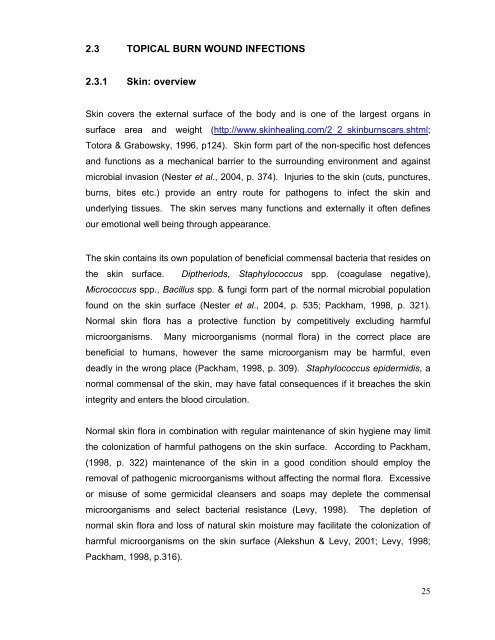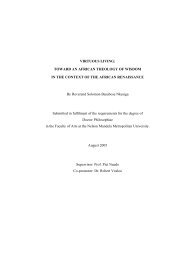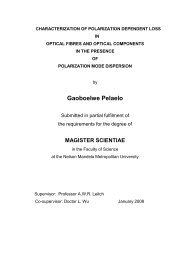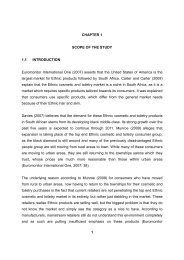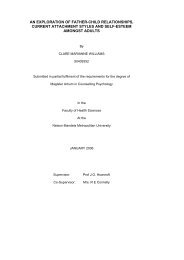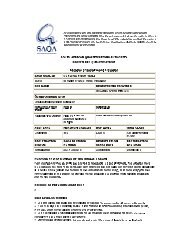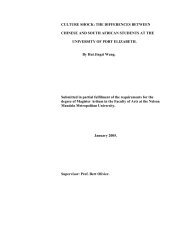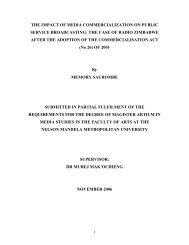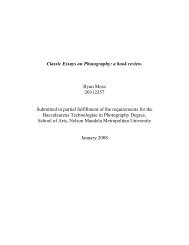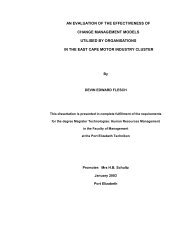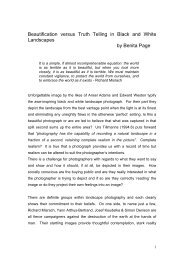an investigation into the antibacterial activities of medicinal plants ...
an investigation into the antibacterial activities of medicinal plants ...
an investigation into the antibacterial activities of medicinal plants ...
Create successful ePaper yourself
Turn your PDF publications into a flip-book with our unique Google optimized e-Paper software.
2.3 TOPICAL BURN WOUND INFECTIONS<br />
2.3.1 Skin: overview<br />
Skin covers <strong>the</strong> external surface <strong>of</strong> <strong>the</strong> body <strong>an</strong>d is one <strong>of</strong> <strong>the</strong> largest org<strong>an</strong>s in<br />
surface area <strong>an</strong>d weight (http://www.skinhealing.com/2_2_skinburnscars.shtml;<br />
Totora & Grabowsky, 1996, p124). Skin form part <strong>of</strong> <strong>the</strong> non-specific host defences<br />
<strong>an</strong>d functions as a mech<strong>an</strong>ical barrier to <strong>the</strong> surrounding environment <strong>an</strong>d against<br />
microbial invasion (Nester et al., 2004, p. 374). Injuries to <strong>the</strong> skin (cuts, punctures,<br />
burns, bites etc.) provide <strong>an</strong> entry route for pathogens to infect <strong>the</strong> skin <strong>an</strong>d<br />
underlying tissues. The skin serves m<strong>an</strong>y functions <strong>an</strong>d externally it <strong>of</strong>ten defines<br />
our emotional well being through appear<strong>an</strong>ce.<br />
The skin contains its own population <strong>of</strong> beneficial commensal bacteria that resides on<br />
<strong>the</strong> skin surface. Dip<strong>the</strong>riods, Staphylococcus spp. (coagulase negative),<br />
Micrococcus spp., Bacillus spp. & fungi form part <strong>of</strong> <strong>the</strong> normal microbial population<br />
found on <strong>the</strong> skin surface (Nester et al., 2004, p. 535; Packham, 1998, p. 321).<br />
Normal skin flora has a protective function by competitively excluding harmful<br />
microorg<strong>an</strong>isms. M<strong>an</strong>y microorg<strong>an</strong>isms (normal flora) in <strong>the</strong> correct place are<br />
beneficial to hum<strong>an</strong>s, however <strong>the</strong> same microorg<strong>an</strong>ism may be harmful, even<br />
deadly in <strong>the</strong> wrong place (Packham, 1998, p. 309). Staphylococcus epidermidis, a<br />
normal commensal <strong>of</strong> <strong>the</strong> skin, may have fatal consequences if it breaches <strong>the</strong> skin<br />
integrity <strong>an</strong>d enters <strong>the</strong> blood circulation.<br />
Normal skin flora in combination with regular mainten<strong>an</strong>ce <strong>of</strong> skin hygiene may limit<br />
<strong>the</strong> colonization <strong>of</strong> harmful pathogens on <strong>the</strong> skin surface. According to Packham,<br />
(1998, p. 322) mainten<strong>an</strong>ce <strong>of</strong> <strong>the</strong> skin in a good condition should employ <strong>the</strong><br />
removal <strong>of</strong> pathogenic microorg<strong>an</strong>isms without affecting <strong>the</strong> normal flora. Excessive<br />
or misuse <strong>of</strong> some germicidal cle<strong>an</strong>sers <strong>an</strong>d soaps may deplete <strong>the</strong> commensal<br />
microorg<strong>an</strong>isms <strong>an</strong>d select bacterial resist<strong>an</strong>ce (Levy, 1998). The depletion <strong>of</strong><br />
normal skin flora <strong>an</strong>d loss <strong>of</strong> natural skin moisture may facilitate <strong>the</strong> colonization <strong>of</strong><br />
harmful microorg<strong>an</strong>isms on <strong>the</strong> skin surface (Alekshun & Levy, 2001; Levy, 1998;<br />
Packham, 1998, p.316).<br />
25


